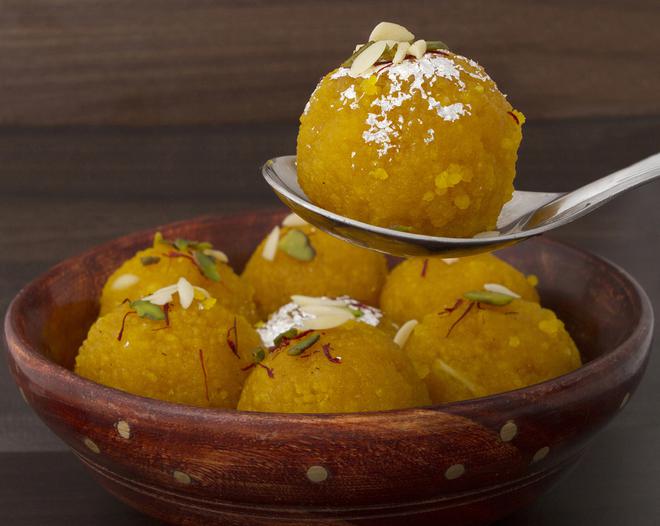With its melting pot of cultures, Visakhapatnam is a home for several communities who have brought with them their culture and tradition to the city. Ahead of Vinayaka Chavithi, Vizagites talk about some of their traditional festive Ganesh Chaturthi delicacies and how they celebrate the festival every year.

At Bhagyashree Barbadikar’s home, the festivities of Vinayaka Chavithi or Ganesh Chaturthi are synonymous with a grand feast with all the traditional delicacies of Maharashtra. The preparations begin days ahead with the smell of the Ganesha’s favourite modak made in big batches wafting through her home. “It has been more than 16 years since we moved to Visakhapatnam, but I celebrate Ganesh Chaturthi with the same fervour as I did back in my hometown of Nagpur,” says Bhagyashree. Her festive food offering includes khirapat, which is a favourite prasadam offered to Lord Ganesha in Maharashtra. “It is a mixture of dry coconut, sugar and dry fruits and is an easy dish to make. Every Maharashtrian household makes khirapat on the first day of the festival and offers it to guests visiting their homes during the 10-day festivities,” says Bhagyashree. The other offerings are dal kakdi (soaked raw chana dal and cucumber pieces), pedha (a sweet), fruit, chana dal (whole and coarsely ground) and cooked black chana dal.

But the festive celebrations are incomplete without Lord Ganesha’s favourite sweet, the modak . According to Bhagyashree, this little sweet dumpling takes on different versions as you move from region to region within Maharashtra. “In Nagpur, which falls under the Vidarbha region of Maharashtra, we make fried modak. In Mumbai, the Konkan belt, Nashik and Pune, steamed modak is more famous. The outer shell of the modak is prepared with rice flour, while stuffing is of grated coconut and jaggery,” she adds.

Over the years, the sweet dish has gone through several transformations with variations like dry fruit modak and chocolate modak. But Bhagyashree says, the traditional way of making modak, steamed or fried, still remains at the core of the Maharashtrian festive offering for Ganesha. Her 10-day festivities at home end with the nutritious and scrumptious dish of Gopalkala, which is also a highlight during Janmashtami. A traditional Maharashtrian savory dish, Gopalkala is made with flattened rice, yogurt, cucumber and spices. “It is a healthy and fireless cooking dish that can be made in a few minutes and served as a breakfast or snack,” she adds. And it’s not just the festive delicacies, the Ganesha idols in Maharashtra have a very unique look and feel, says Bhagyashree, who will be getting hers all the way from Nagpur this year.

According to Priti Patil, who shifted to Visakhapatnam five years ago from Maharashtra, while modak is an integral part of the Maharashtrian celebrations, the offerings also include puran poli, amti, basundi and kurdai. “Puran poli is a sweet paratha made with chana dal, flour, cardamom and sugar. While making this, we preserve the water from the chana dal and use it to make amti. So in a way, both the dishes are made together,” explains Priti.
In Rajasthan, Lord Ganesha is welcomed with the churma laddoos, a crunchier version of the sweet dish. Every year ahead of Vinayaka Chavithi, Usha Goyal gets busy preparing a big lot of the churma laddoos for her home festivities as well as the special orders she gets for her festive bakes and dishes. “Churma laddoo is is made with wheat flour and jaggery and prepared by continuously roasting it after which dry fruits are added to it,” says Usha, who runs a home-based baking enterprise Munch-a-Treat. Apart from churma laddoos, the besan laddoo made with gond is also offered as a prasadam before Lord Ganesha at Marwari households, she adds.

Giving a twist to the traditional modaks, Usha will be making the modak nankhatai this year. “Festive dishes can be made in a healthy way, where people can feel less guilty about digging into sweet pleasures. The modak nankhatai will replace refined sugar with brown sugar and will be baked instead of being doused in ghee or oil for frying,” she says.
In traditional Andhra households in the coastal belt of Andhra Pradesh, modak takes the name of jilledu kayalu. “It is prepared with rice flour stuffed with a mix of coconut and jaggery or sugar,” says K Vijaylakshmi, a homemaker in Visakhapatnam. The shape of this Andhra version of modak is long and cylindrical and is said to have originated in Visakhapatnam, Vizianagaram and Srikakulam districts.







